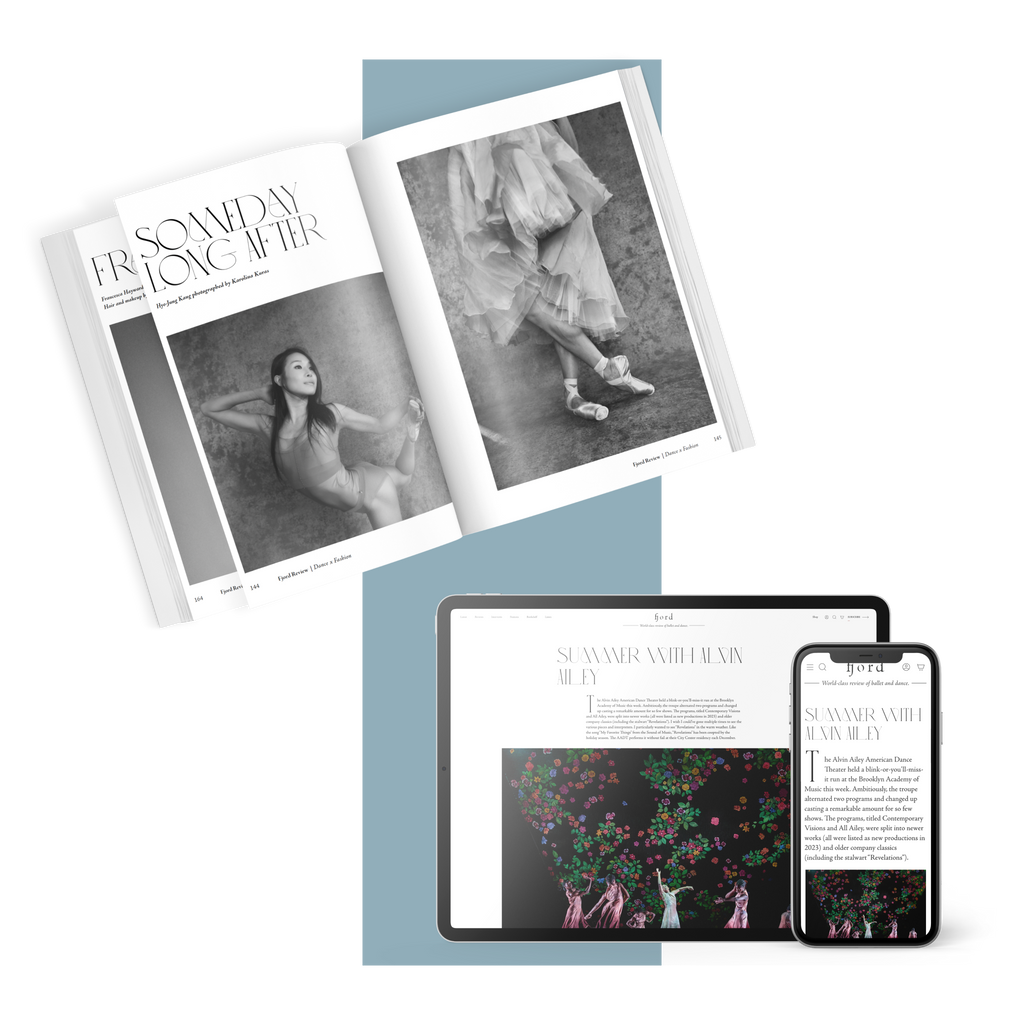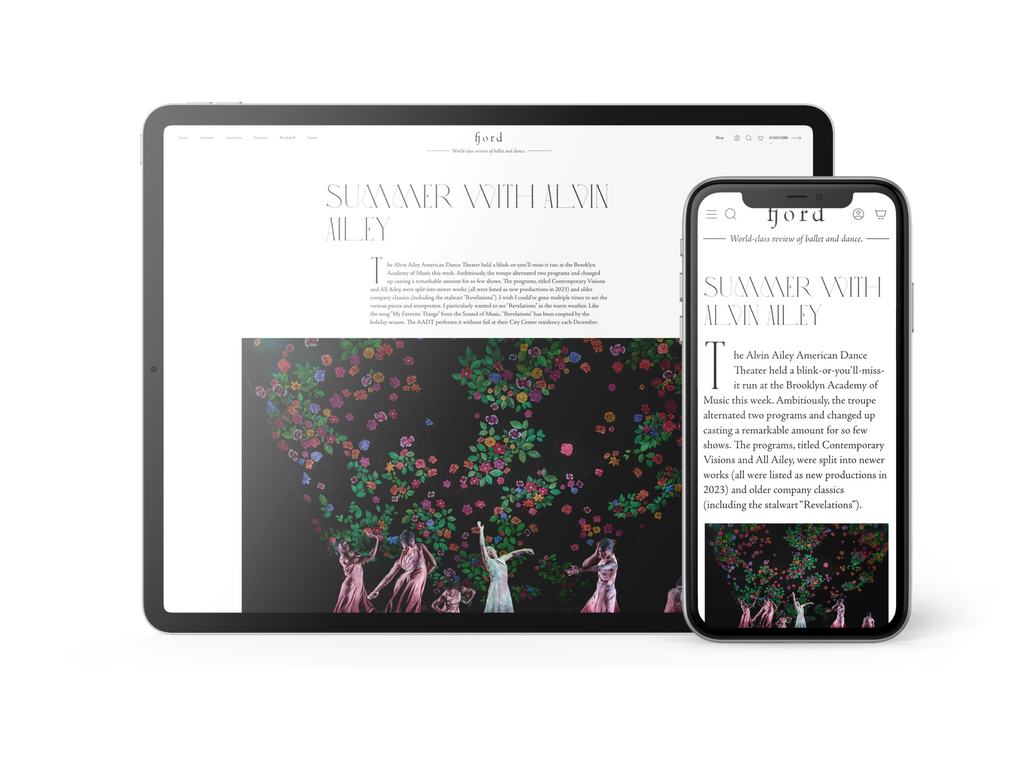With a lush vocal score by Jeremy Dutcher, the dance follows a community leader who struggles to balance independence and dependence within a group. The leader is introduced as an elevated monument, lifted standing by six dancers. He breaks free, dancing separately with sweeping contemporary ballet movements that take him in and out of the floor. The group performs in unison, one moment all lined-up with arms woven both in front of and behind each other's shoulders, creating a long human braid out of which peek rolling heads. In this striking image, the dancers look like they're coming out of water, coming up for air.
Last on this program was “Rhapsody in Blue” by the choreographer duo Iratxe Ansa and Igor Bacovich, performed by the Italian Centro Coreografico Nazionale/Aterballetto. Set to Gershwin's score, the piece depicts a crowd enchanted by the moon (literally: a giant, circular scenic design by Fabio Cherstich hangs as a backdrop).
When the piece opens, the circle (which changes color) is a vibrant blue. The dancers face it, backs to the audience, swaying slowly. Momentarily released by the moon's hypnotic pull, they separate in pas de deux, tumbling over each other playfully, and thrusting dancers into the air. The choreography relates cinematically, comedically, and almost cartoon-like to the music: The dancers, all hypermobile, virtuosic movers, twitch in response to staccato piano notes, then hit poses in canon to glissandos. To a climactic crescendo, they slow way down, butoh-like, exaggerating facial expressions.











comments